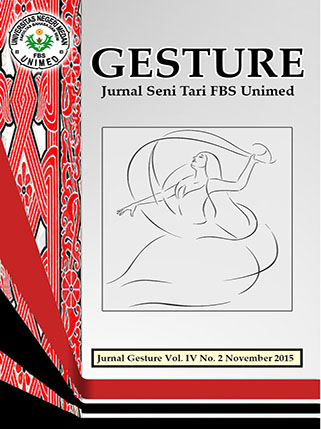FAMADOGO OMO DANCE FOR US IN CEREMONY ENTERED A NEW HOME IN THE COMMUNITY NIAS
DOI:
https://doi.org/10.24114/senitari.v4i1.2633Keywords:
Nias Dance, Famadogo Omo, Nias CultureAbstract
This study discusses forms of dance in the ceremony Omo Famadogo entering new homes in the community nias. The purpose of this study was to describe the form of dance ceremony Omo Famadogo entering new homes in Nias people. Theoretical foundation used in this research is the theory Sumandiyo Hadi and Suzan K. Langer with dance forms in complete unity. The population in this study is the dance Famadogo masyaraat Omo on Nias, artists, traditional leaders and dancers who know about dance Famadogo Omo, the sample in this study is the cultural figures and artists who know about art Famadogo Omo. Data collected by field work method that includes several steps, namely interviews, direct observation, documentation and literature study. The method used in this research is descriptive qualitative method. Based on the results of research conducted, that form of dance ceremony Omo Famadogo entering new houses on Nias community is a dance that test the strength and endurance on the building of new houses have been completed in the wake. This dance is a unified whole where this raw dance consists of nine varieties, which includes variation, repetition, movement, sequence, comparison, climax.Downloads
Published
2015-09-10
Issue
Section
Articles
License
Copyright (c) 2015 Sri Rahayu

This work is licensed under a Creative Commons Attribution-ShareAlike 4.0 International License.
Authors published with the Gesture: Jurnal Seni Tari agree to the following terms:
- Authors retain copyright and grant the journal the right of first publication with the work simultaneously licensed under a Creative Commons Attribution License (CC BY-SA 4.0) that allows others to share the work with an acknowledgment of the work's authorship and initial publication in this journal.
- Authors are able to enter into separate, additional contractual arrangements for the non-exclusive distribution of the journal's published version of the work (e.g., post it to an institutional repository or publish it in a book), with an acknowledgment of its initial publication in this journal.
- Authors are permitted and encouraged to post their work online (e.g., in institutional repositories or on their website) prior to and during the submission process, as it can lead to productive exchanges, as well as earlier and greater citation of published work. (See The Effect of Open Access)

